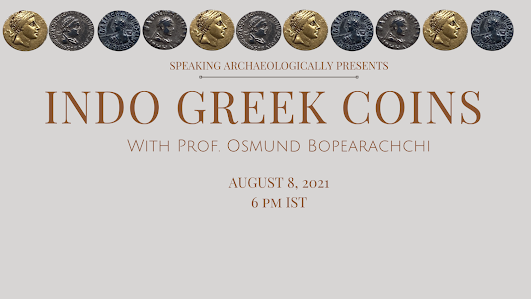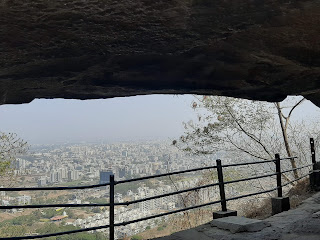SA Travel Diaries: The Wonder that was Masrur by Gauri Singh
 |
| Gauri Singh is a Speaking Archaeologically Workshop and CArch Member |
The entry, now, to the temple is from the rear. There was a small booth along the entrance stairs where we bought the tickets from. As I walked in, I noticed the temple first and then a huge tank of water right in front of the sandstone structure.
Knowing it will take me a very long time to explore the temple I chose to go around the water tank first. I could see from the opposite side a complete reflection of the beautiful temple in green waters of the tank which was almost 50 meters wide. From distance a noticed my mother throwing bits of something in water. As I went closer to see I realised the tank is also a habitat for big fishes.
Knowing it will take me a very long time to explore the temple I chose to go around the water tank first. I could see from the opposite side a complete reflection of the beautiful temple in green waters of the tank which was almost 50 meters wide. From distance a noticed my mother throwing bits of something in water. As I went closer to see I realised the tank is also a habitat for big fishes.
 |
| Masrur Temple, a rock-cut temple complex dating back to 6th-8th century |

Another flight of steep step-pathway on the left of complex led to a separate room, old and locked. Behind the grills were more carved debris of temple, all marked with numbers for record. I climbed up to the terrace of the room. From there I could clearly see in the south, behind the next hill, a shiny water body - the Pong Dam and Reservoir, also popularly known as Maharana Pratap Sagar. I stood there, despite my bare feet burning, absorbing in the breathtaking view of mountains, hills, silver clouds, small farms and a calm sea around me. It couldn’t be more beautiful. I descended from the place carefully soon after a while.
 I talked to a family residing in a separate quarters within the complex area. They were there to take care of the security of the historical temple. They could not tell much about the place. They said it was believed to be built by Pandavas during their exile from their kingdom. The tank was built by them for their wife Draupadi. They couldn’t complete it and left the place to go further deep in Himalayas. The temple is also called Thakurdwara. I fed the fishes some more and enjoyed the cool breeze and the view around while sitting under the massive Peepal tree.
I talked to a family residing in a separate quarters within the complex area. They were there to take care of the security of the historical temple. They could not tell much about the place. They said it was believed to be built by Pandavas during their exile from their kingdom. The tank was built by them for their wife Draupadi. They couldn’t complete it and left the place to go further deep in Himalayas. The temple is also called Thakurdwara. I fed the fishes some more and enjoyed the cool breeze and the view around while sitting under the massive Peepal tree.
I had to be extra careful while exploring the place as lizards kept popping from underneath heavy stones. There were few tourists, some local and most foreigners as it not very popular yet. The boards outside stated that Archaeological Survey of India has declared it a monument of national importance. I could spend more time studying the details of carvings but running short of time we left the place in two hours. Even in the month of July, in the heat, the whole experience was refreshing and gave me a hundred topics to ponder upon on my way back. My visit to Kangra felt worthwhile.



Good study, i went to site first in 1993 then an 2012 and wrote on my page
ReplyDelete